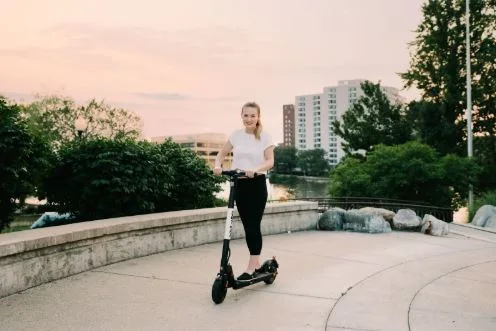Electric Scooter Laws 2025 in Canada
As urban congestion continues to rise across Canada, electric scooters have become a popular and eco-friendly transportation solution for short commutes, leisurely rides, and even outdoor adventures.
However, as the use of electric scooters expands, the need for clear regulations to ensure safe usage becomes crucial. In 2025, Canadian cities and provinces are updating their laws to address the growing number of riders. This article will explore the current electric scooter laws in Canada, including national regulations, provincial differences, and tips for understanding and complying with local rules.
Key Takeaways
- Electric scooter laws in Canada vary by province and city, with each jurisdiction having its own set of rules.
- The minimum age for riding an electric scooter for adults is generally 16 years, with certain provinces requiring helmet use.
- Speed limits for electric scooters range from 24 km/h to 32 km/h, depending on the region.
- Local laws may restrict where electric scooters can be used—most cities require them to be ridden on bike lanes, not sidewalks.
- It’s essential for riders to stay informed about local laws, especially when traveling between cities or provinces.
National Regulations for Electric Scooters
Minimum Age Requirements
Across Canada, most provinces set the minimum age for riding an electric scooter at 16. This ensures that riders have the physical and mental maturity needed to safely operate these vehicles. Rental services usually require proof of age to verify that riders meet the age requirement before renting an electric scooter for adults.
Helmet Laws
In 2025, the majority of provinces and cities in Canada still require electric scooter riders to wear helmets. In regions like Ontario and British Columbia, helmet use is mandatory, and failure to comply can result in fines. However, some cities, like Montreal, allow adults over the age of 18 to ride without a helmet, though safety experts recommend that all riders wear helmets to minimize the risk of head injuries.
Speed Limits and Power Restrictions
The speed limit for electric scooters in most Canadian cities is set between 24 km/h and 32 km/h. This range ensures that scooters can provide a quick and efficient mode of transport while minimizing risks to pedestrians and other vehicles. The motor power is also regulated, generally limited to 500W to prevent excessive speed and ensure safety in busy urban environments.
Where Electric Scooters Are Allowed
The areas where electric scooters can be used depend on local regulations. In cities like Vancouver and Montreal, electric scooters for adults are restricted to bike lanes and other designated areas, with bans on riding on sidewalks. These rules aim to reduce conflicts with pedestrians and ensure a safer experience for all road users.
In some provinces, such as Ontario, e-scooters are allowed only in specific urban areas, and riders are prohibited from using them on highways or main roads. Meanwhile, Quebec offers broader usage allowances but still imposes speed limits and helmet requirements.
Provincial Regulations
While national regulations provide a framework, the laws governing electric scooter use are primarily set by provincial governments, and these rules can differ significantly:
- British Columbia: E-scooters are permitted on bike lanes but are not allowed on sidewalks. Riders must wear helmets, and the speed limit is set at 32 km/h. Riders are also expected to follow traffic rules designed for cyclists.
- Ontario: Ontario has stricter regulations for electric scooters for adults. In many cities, riders are required to have a valid driver’s license. Helmets are mandatory, and the maximum speed is limited to 24 km/h. E-scooters are prohibited from major streets and highways.
- Quebec: Quebec has a more flexible approach, allowing e-scooters on various types of roads. However, riders must still wear helmets, and speed limits are typically capped at 30 km/h. Local municipalities may impose additional restrictions based on their needs.
Tips for Understanding and Navigating Local Laws
It is crucial for electric scooter riders to be aware of and adhere to local laws, especially when riding in different cities or provinces. Here are some practical tips:
- Check Local Regulations: As laws vary from city to city and province to province, make sure to check the specific rules of the area you’re in. This includes speed limits, where you can ride, and helmet requirements.
- Use Rental Apps: Many electric scooter for adults rental companies provide apps that guide users on local laws and restrictions. These apps often feature important information about where you can ride and the maximum speed allowed.
- Follow Traffic Signs: Pay attention to traffic signs that may indicate where electric scooters are allowed or not allowed. These signs are often placed in areas where riding could be dangerous for pedestrians or other vehicles.
- Stay Updated: As cities and provinces continue to revise and update electric scooter laws, keep an eye on local government announcements and legal changes to ensure you’re always compliant.
Conclusion
As the popularity of electric scooters continues to rise across Canada, understanding the 2025 regulations is essential for both safety and legal compliance. Whether you’re using an electric scooter for adults in Toronto, Vancouver, or Montreal, knowing the local laws will help you have a safer and more enjoyable experience. By staying informed and following the rules, you contribute to the development of a safer and more sustainable urban transportation system across Canada.





